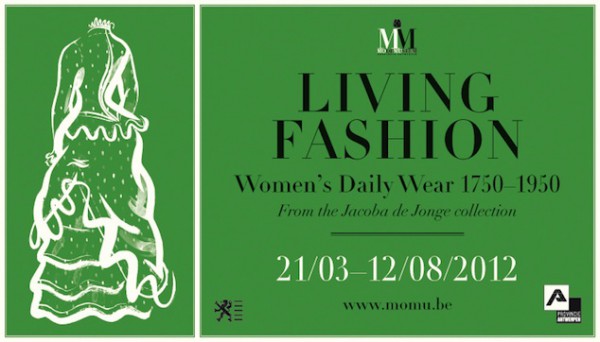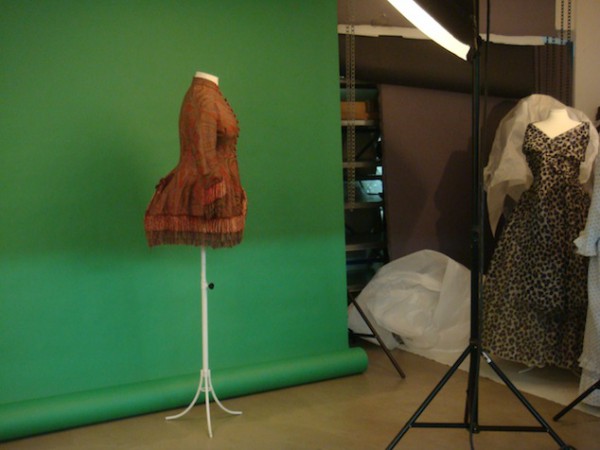 When we do a photoshoot of MoMu collection pieces for an exhibition catalogue, it nearly feels like a real fashion shoot: there’s a studio, a photographer, people who arrange the costume (a bit like stylists) and an art-director (or two). The only person missing is a model: we use mannequins instead because the clothes in our collection cannot be worn by humans, since this is too damaging for the fragile textiles.
When we do a photoshoot of MoMu collection pieces for an exhibition catalogue, it nearly feels like a real fashion shoot: there’s a studio, a photographer, people who arrange the costume (a bit like stylists) and an art-director (or two). The only person missing is a model: we use mannequins instead because the clothes in our collection cannot be worn by humans, since this is too damaging for the fragile textiles.
Historic dresses from the Jacoba de Jonge collection in line-up for the shoot, 2012 (c) MoMu
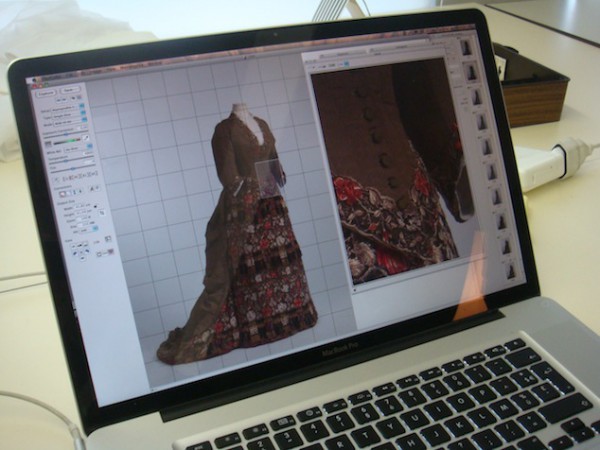 The use of mannequins for a shoot has advantages (there’s never a bad hairday, and once a pose is good, the manneuin can stay like that for hours) but it also causes problems: the lack of limbs make the piece very static, and it is very hard to make it look expressive or life-like, it is hard to bring any natural movement into clothes. For this shoot, all the dresses have different sizes and body forms, because the silhouettes come out of such different eras, in which the female form, or how it was manipulated in fashion, changed. The corsets and crinolines are all very specific to a certain shape, hence the mannequins were all cut to fit the dress. Then they are covered and filled with extra padding, so the photoshoot took a lot of preparation for some 40+ silhouettes, and this is only half the amount of garments in the exhibition.
The use of mannequins for a shoot has advantages (there’s never a bad hairday, and once a pose is good, the manneuin can stay like that for hours) but it also causes problems: the lack of limbs make the piece very static, and it is very hard to make it look expressive or life-like, it is hard to bring any natural movement into clothes. For this shoot, all the dresses have different sizes and body forms, because the silhouettes come out of such different eras, in which the female form, or how it was manipulated in fashion, changed. The corsets and crinolines are all very specific to a certain shape, hence the mannequins were all cut to fit the dress. Then they are covered and filled with extra padding, so the photoshoot took a lot of preparation for some 40+ silhouettes, and this is only half the amount of garments in the exhibition.
Historic dresses from the Jacoba de Jonge Collection in line-up for the shoot, 2012 (c) MoMu
Historic dresses from the Jacoba de Jonge Collection in line-up for the shoot, 2012 (c) MoMu
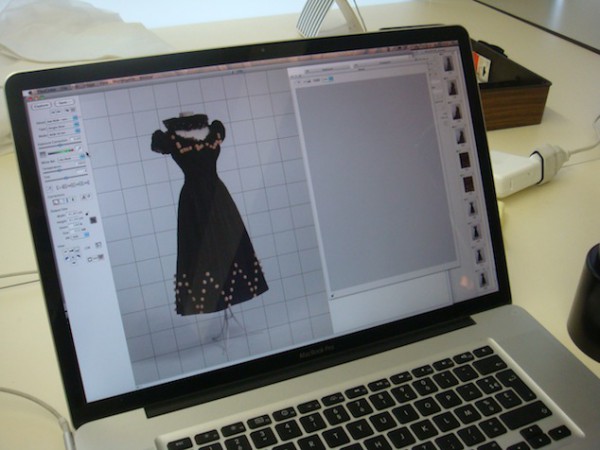
Historic dresses from the Jacoba de Jonge Collection in line-up for the shoot, 2012 (c) MoMu
 Once the first few photos, in which the lighting has to be carefully adjusted (every crinkle and crease in the fabric seems to grow larger on camera), are done, the rythm of shots grows quicker. we have to stay very attentive to detail, however, as every silhouette is a new challenge, with interesting details but sometimes also signs of decay, that have to be camouflaged without manipulating the piece too much.
Once the first few photos, in which the lighting has to be carefully adjusted (every crinkle and crease in the fabric seems to grow larger on camera), are done, the rythm of shots grows quicker. we have to stay very attentive to detail, however, as every silhouette is a new challenge, with interesting details but sometimes also signs of decay, that have to be camouflaged without manipulating the piece too much.
The largest difference with a ‚Äėnormal‚Äô fashion shoot is maybe just that: the museum is no place for quickly trying out new combinations or adapting clothes, they can barely be touched.
Historic dresses from the Jacoba de Jonge Collection in line-up for the shoot, 2012 (c) MoMu
 Nevertheless, it is a very exciting challenge to make the historical silhouettes come alive on the photograph, putting the title of the exhibition ‚ÄėLiving fashion‚Äô into practice.
Nevertheless, it is a very exciting challenge to make the historical silhouettes come alive on the photograph, putting the title of the exhibition ‚ÄėLiving fashion‚Äô into practice.
Historic dresses from the Jacoba de Jonge Collection in line-up for the shoot, 2012 (c) MoMu

Historic dresses from the Jacoba de Jonge Collection in line-up for the shoot, 2012 (c) MoMu
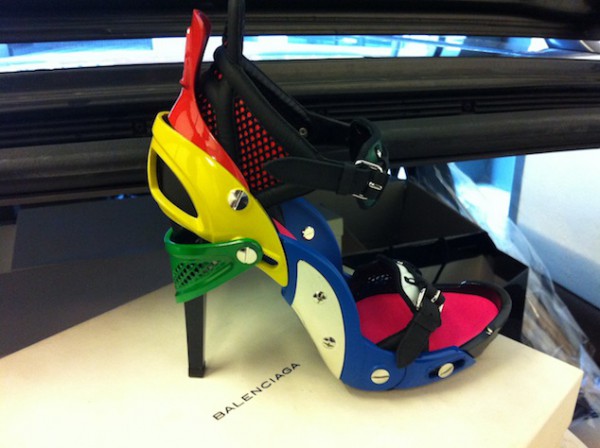 What would our MoMu Collection be without the generous donations from fashion enthusiast! This afternoon we got a visit from Geert Bruloot, co-owner of the Antwerp shoe store Coccodrillo with a car trunk full of designer shoes from previous seasons that will now be included in our MoMu Collection!
What would our MoMu Collection be without the generous donations from fashion enthusiast! This afternoon we got a visit from Geert Bruloot, co-owner of the Antwerp shoe store Coccodrillo with a car trunk full of designer shoes from previous seasons that will now be included in our MoMu Collection!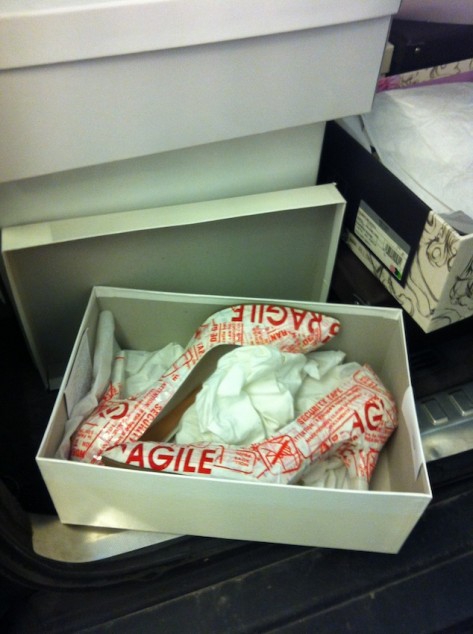 Maison Martin Margiela ‘Fragile’ tape pumps S/S2006
Maison Martin Margiela ‘Fragile’ tape pumps S/S2006 Prada Flower heels S/S2008
Prada Flower heels S/S2008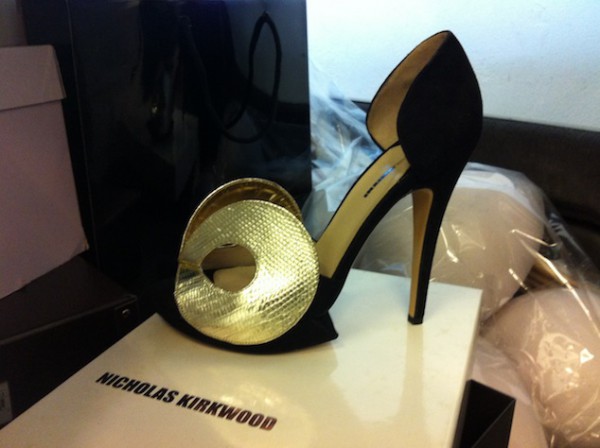 Nicholas Kirkwood S/S2009, the British designer that also creates the catwalkshoes for Rodarte, Peter Pilotto,…
Nicholas Kirkwood S/S2009, the British designer that also creates the catwalkshoes for Rodarte, Peter Pilotto,…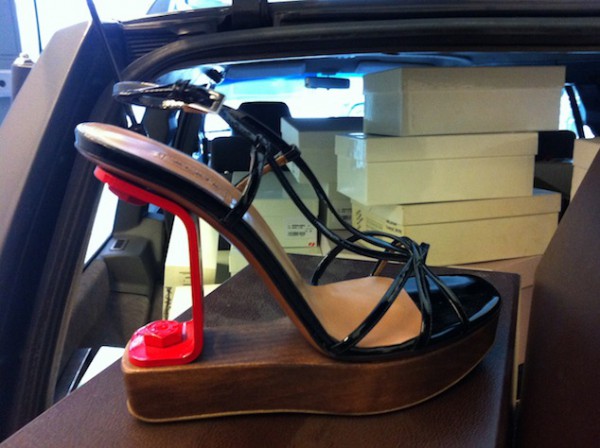 Azzedine Ala√Įa Steel heeled wedge sandal S/S2010
Azzedine Ala√Įa Steel heeled wedge sandal S/S2010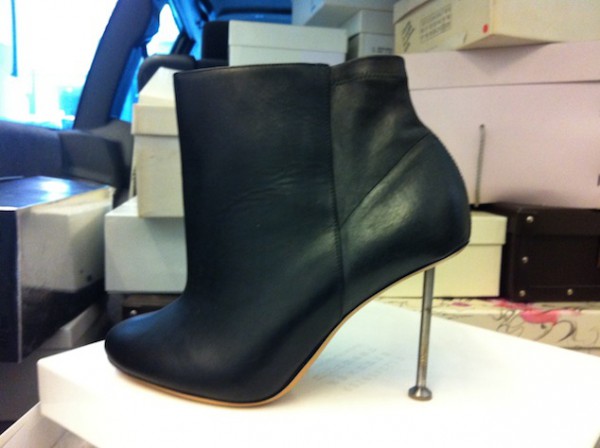 Maison Martin Margiela Nail heel pump F/W2008
Maison Martin Margiela Nail heel pump F/W2008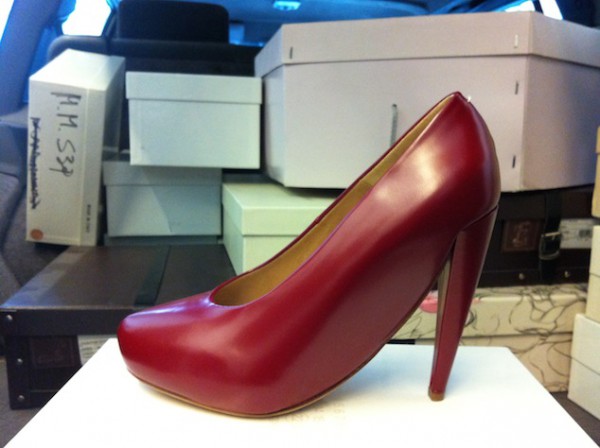 Maison Martin Margiela Leather sunken platform pump S/S2011
Maison Martin Margiela Leather sunken platform pump S/S2011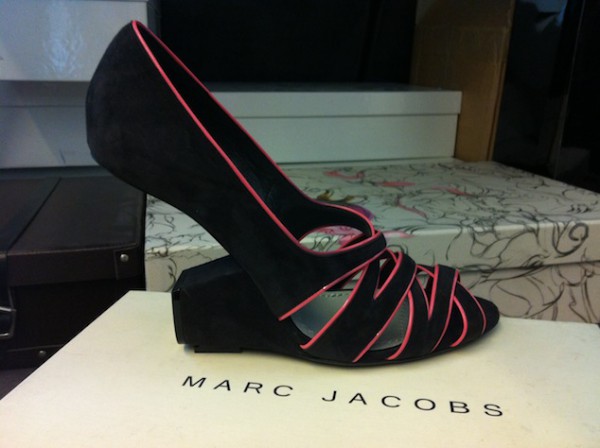 Marc Jacobs Reverse heel S/S2008
Marc Jacobs Reverse heel S/S2008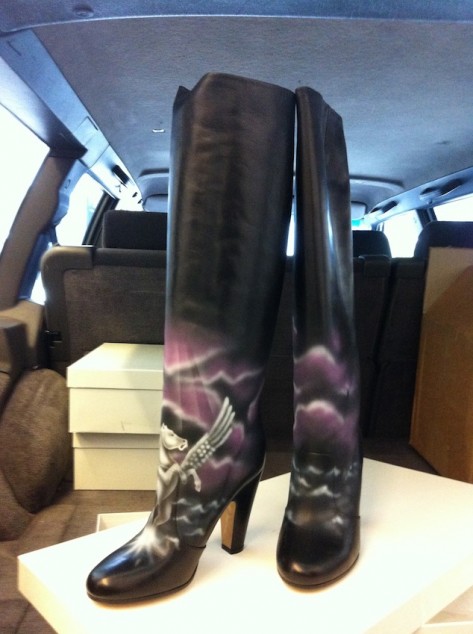 Maison Martin Margiela Horse print boots F/W2008
Maison Martin Margiela Horse print boots F/W2008

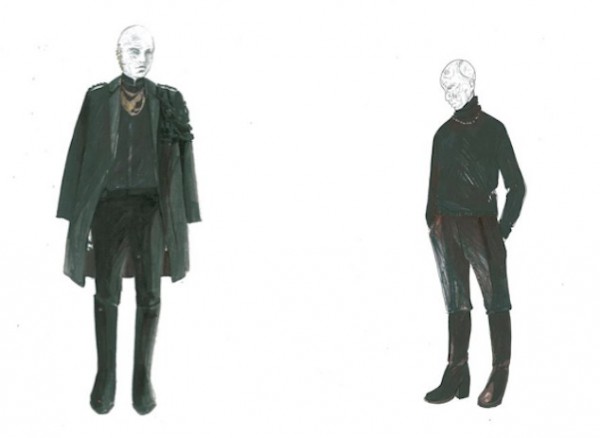
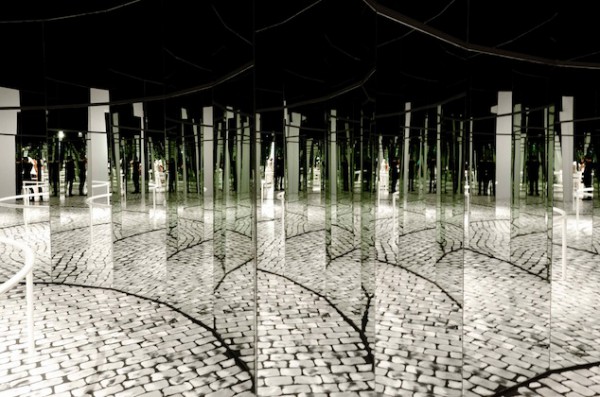
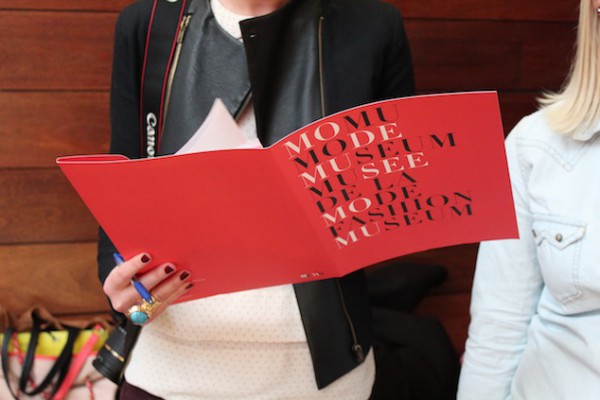
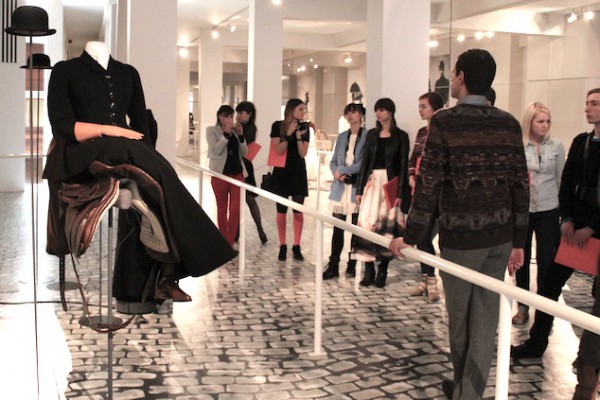
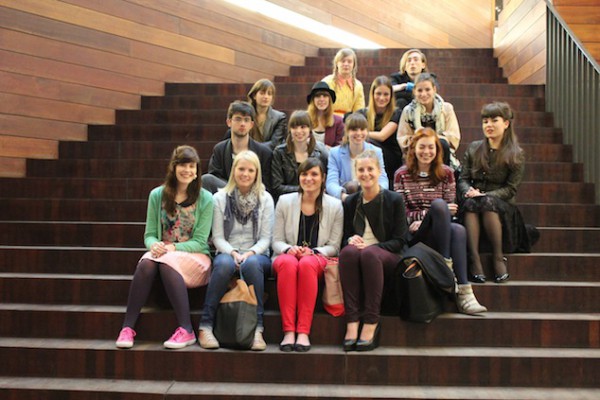
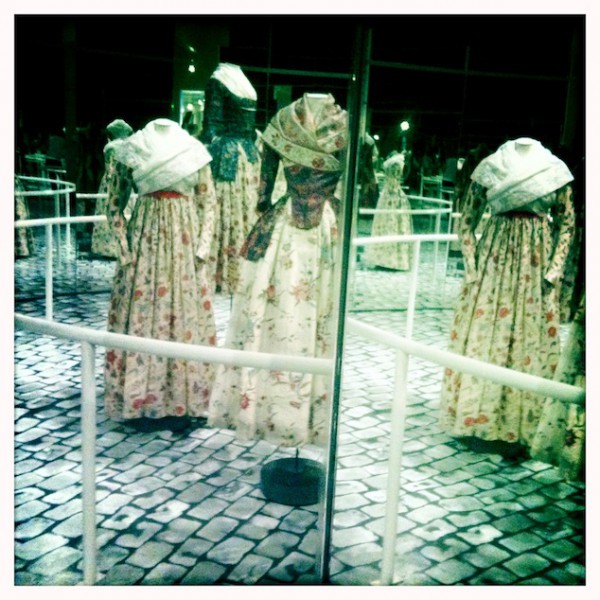
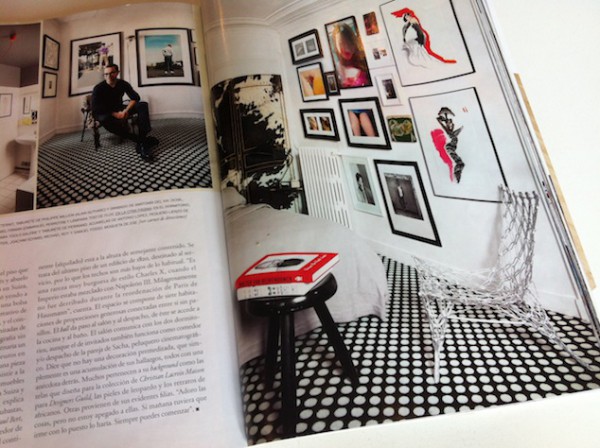 We were very hapy to spot the Walter Van Beirendonck catalogue in the latest issue of AD ‚Äď Architectural Digest Spain! The exhibition catalogue features in a shoot of the interior of Sacha Walckhoff, creative director at Christian Lacroix.
We were very hapy to spot the Walter Van Beirendonck catalogue in the latest issue of AD ‚Äď Architectural Digest Spain! The exhibition catalogue features in a shoot of the interior of Sacha Walckhoff, creative director at Christian Lacroix.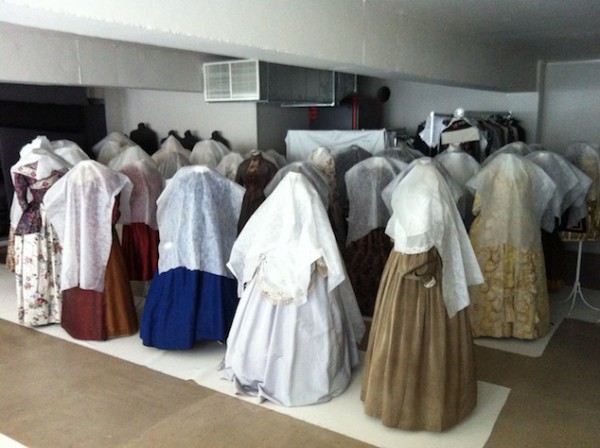
 When we do a photoshoot of MoMu collection pieces for an exhibition catalogue, it nearly feels like a real fashion shoot: there’s a studio, a photographer, people who arrange the costume (a bit like stylists) and an art-director (or two). The only person missing is a model: we use mannequins instead because the clothes in our collection cannot be worn by humans, since this is too damaging for the fragile textiles.
When we do a photoshoot of MoMu collection pieces for an exhibition catalogue, it nearly feels like a real fashion shoot: there’s a studio, a photographer, people who arrange the costume (a bit like stylists) and an art-director (or two). The only person missing is a model: we use mannequins instead because the clothes in our collection cannot be worn by humans, since this is too damaging for the fragile textiles. The use of mannequins for a shoot has advantages (there’s never a bad hairday, and once a pose is good, the manneuin can stay like that for hours) but it also causes problems: the lack of limbs make the piece very static, and it is very hard to make it look expressive or life-like, it is hard to bring any natural movement into clothes. For this shoot, all the dresses have different sizes and body forms, because the silhouettes come out of such different eras, in which the female form, or how it was manipulated in fashion, changed. The corsets and crinolines are all very specific to a certain shape, hence the mannequins were all cut to fit the dress. Then they are covered and filled with extra padding, so the photoshoot took a lot of preparation for some 40+ silhouettes, and this is only half the amount of garments in the exhibition.
The use of mannequins for a shoot has advantages (there’s never a bad hairday, and once a pose is good, the manneuin can stay like that for hours) but it also causes problems: the lack of limbs make the piece very static, and it is very hard to make it look expressive or life-like, it is hard to bring any natural movement into clothes. For this shoot, all the dresses have different sizes and body forms, because the silhouettes come out of such different eras, in which the female form, or how it was manipulated in fashion, changed. The corsets and crinolines are all very specific to a certain shape, hence the mannequins were all cut to fit the dress. Then they are covered and filled with extra padding, so the photoshoot took a lot of preparation for some 40+ silhouettes, and this is only half the amount of garments in the exhibition.
 Once the first few photos, in which the lighting has to be carefully adjusted (every crinkle and crease in the fabric seems to grow larger on camera), are done, the rythm of shots grows quicker. we have to stay very attentive to detail, however, as every silhouette is a new challenge, with interesting details but sometimes also signs of decay, that have to be camouflaged without manipulating the piece too much.
Once the first few photos, in which the lighting has to be carefully adjusted (every crinkle and crease in the fabric seems to grow larger on camera), are done, the rythm of shots grows quicker. we have to stay very attentive to detail, however, as every silhouette is a new challenge, with interesting details but sometimes also signs of decay, that have to be camouflaged without manipulating the piece too much. Nevertheless, it is a very exciting challenge to make the historical silhouettes come alive on the photograph, putting the title of the exhibition ‚ÄėLiving fashion‚Äô into practice.
Nevertheless, it is a very exciting challenge to make the historical silhouettes come alive on the photograph, putting the title of the exhibition ‚ÄėLiving fashion‚Äô into practice.
